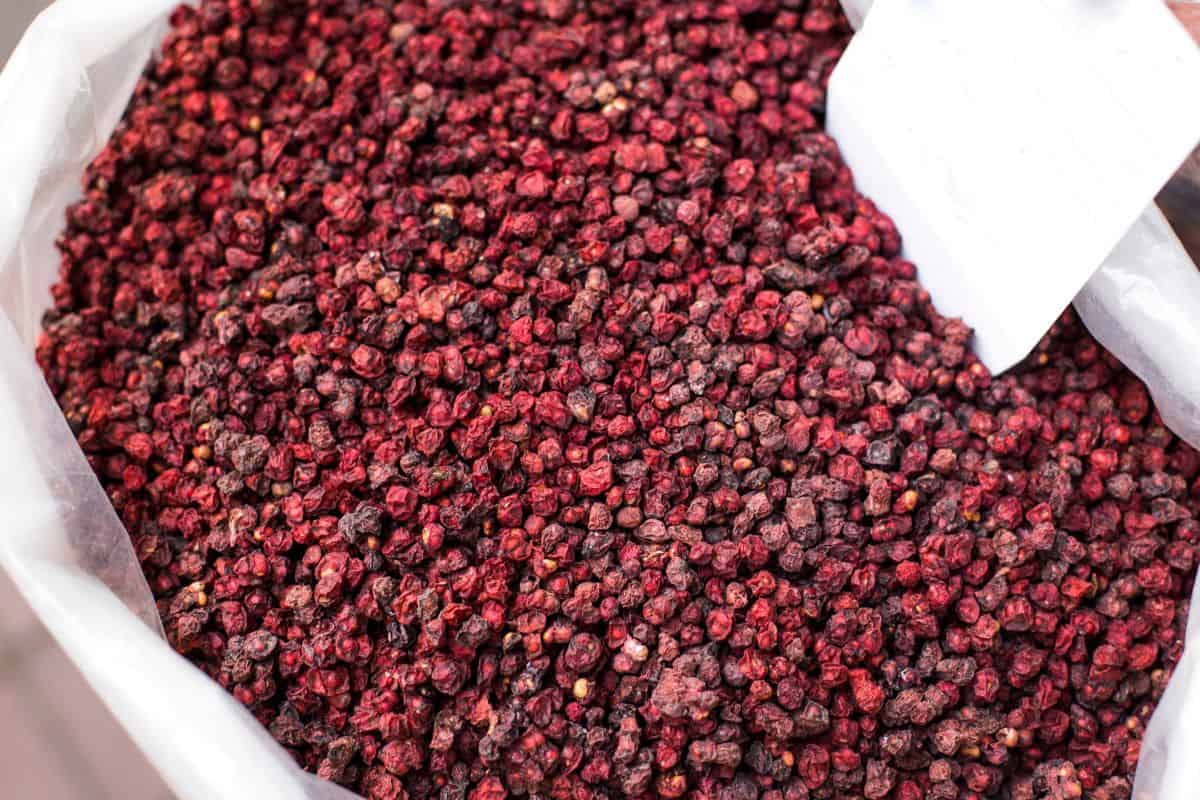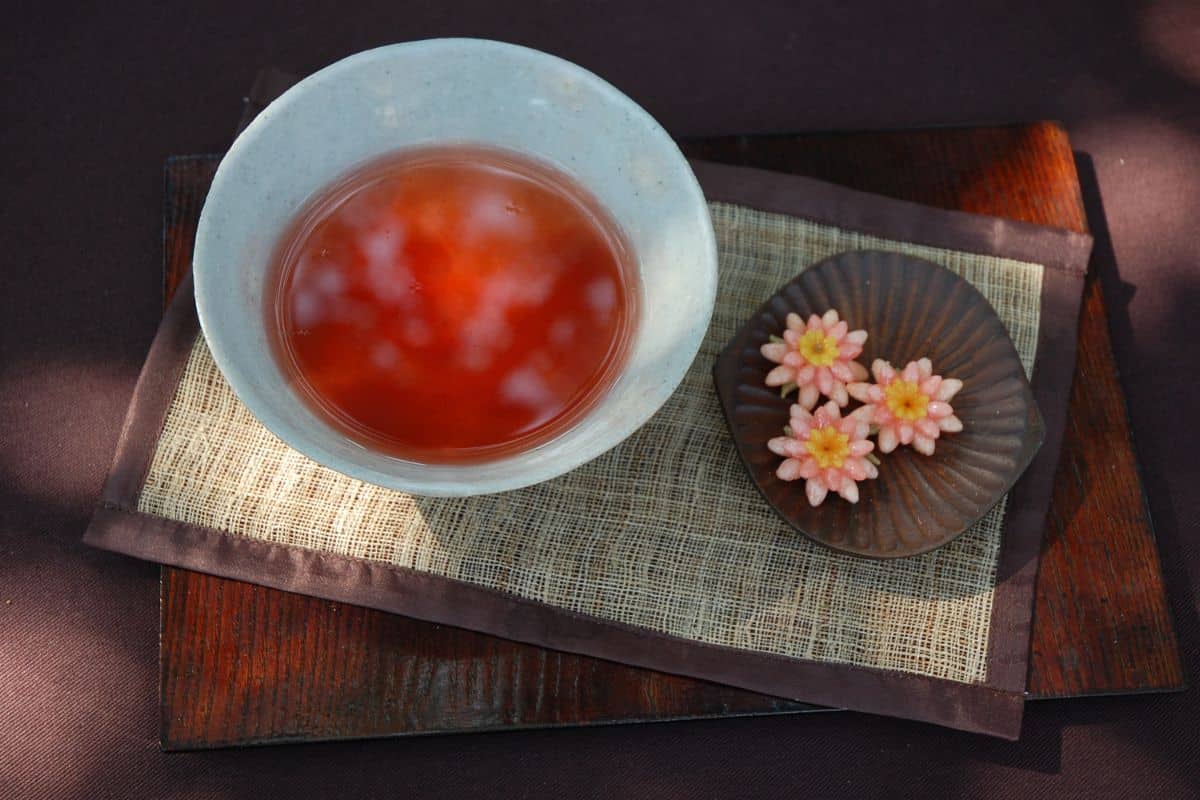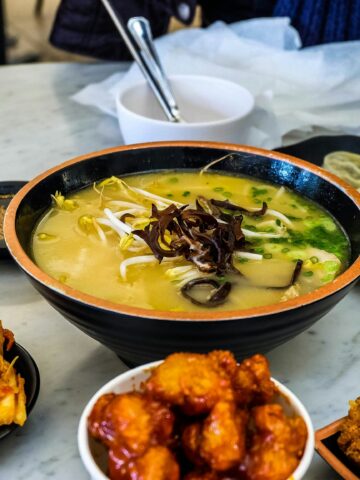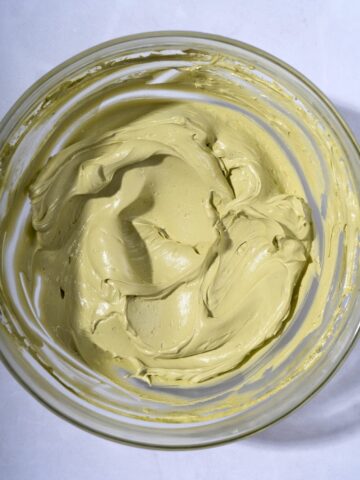Omija, also known as schisandra berry or five-flavor fruit, is a unique and flavorful berry that hails from Korea. Known for its distinctive taste that combines sweet, salty, sour, spicy, and bitter flavors, omija offers a sensory adventure in every bite.
This berry has been cherished in traditional Korean medicine for its potential health benefits, which are deeply rooted in centuries-old practices.
Grown on the Schisandra Chinensis vine, which is native to the forests of Northern China, the Russian Far East, and the Korean Peninsula, omija is celebrated not just for its taste but also for its possible health advantages.
The berry is often made into teas and supplements believed to support overall well-being by promoting balanced organ functions. This ancient superfood continues to be a staple in Korean traditional medicine.
In modern times, omija has caught the attention of health enthusiasts worldwide. Many turn to this berry for its reputed benefits, which include boosting energy, enhancing mental clarity, and reducing stress.

Jump to:
⏳ History and Origin
Traditional Significance in Korea
In Korea, omija has been cherished for centuries. It grows particularly well in the mountainous regions, thriving at elevations around 1,500 feet. This vibrant berry, often compared to goji berries, is known as the "five-flavor fruit" because it combines sweetness, sourness, bitterness, saltiness, and pungency.
Traditionally, Koreans have used omija in various ways. The berries are often dried and used in teas like omija-cha, which is both refreshing and reputed to have health benefits.
The leaves and berries of the magnolia vine are also staples in Korean traditional cooking, highlighting omija's importance in daily life. Its therapeutic properties have made it a crucial part of Korean medicine.
Global Spread
Schisandra chinensis is native to the dense forests of Northern China, the Russian Far East, and the Korean Peninsula. Over time, its medicinal and culinary value has led to greater global recognition.
The plant is now hardy in USDA Zone 4, allowing it to be cultivated in various climates beyond Asia. As a result, omija has been embraced by people worldwide who are interested in its health benefits and unique flavor profile.
Modern herbalists and health enthusiasts value it for its adaptogenic properties, which are believed to help the body cope with stress. The spread of omija is a testament to its enduring appeal and versatile uses across different cultures and contexts.

🪴 Botanical Profile
Plant Description
Schisandra chinensis is a woody vine that climbs up to 29 feet tall. It belongs to the Schisandraceae family. The vine has glossy, dark green leaves, which are deciduous.
The berries are small and red, with vine bears that are tiny, star-like flowers that bloom in late spring to early summer. These flowers are usually yellow or white and contain both male and female reproductive organs. The seeds within the berries are usually hard and can be used for propagation.
Growth and Harvesting
Schisandra grows well in cool, temperate climates. It thrives in forests and mountainous regions of Northern China, Korea, Japan, and Russia. The plant is hardy in USDA Zone 4, which indicates its ability to withstand cold temperatures Schisandra chinensis.
Propagation is commonly done using seeds or layering. Seeds need cold stratification to germinate effectively. Layering involves bending a low branch to the ground and covering it with soil until roots develop. Schisandra prefers well-drained soil and partial shade.
Harvesting usually occurs in late summer to early fall when the berries reach full maturity. The berries are picked by hand to prevent damage, then dried or used fresh for various applications about omija vines.
🍳 Culinary Uses
Traditional Korean Recipes
Omija plays a vital role in Korean cooking and is often used for its five-flavor profile. One common use is in omija tea, which combines sweet, sour, salty, bitter, and spicy tastes. This tea is typically enjoyed both hot and cold, offering a refreshing yet complex flavor.
Another traditional recipe is omija cheong, a type of syrup made by steeping the berries in sugar. This syrup is used to flavor various dishes and beverages, adding a sweet and tangy touch. Omija can also be found in traditional Korean sweets like dasik, which are often served on special occasions.
Modern Adaptations and Pairings
In modern kitchens, omija has found its way into a variety of innovative dishes. Chefs use it to create unique flavor pairings and add a twist to familiar recipes. Omija is sometimes used in fruit punches or added to alcoholic beverages, where it imparts a distinctive taste.
It's also paired with fruits like strawberries and citrus in refreshing drinks and desserts. Modern cooks experiment with omija in sauces and marinades, leveraging its complex flavor to enhance meats and vegetables. The versatility of omija makes it a popular choice for creative culinary uses.

👩⚕️ Nutritional Benefits
General Health Effects
Omija berries are packed with vitamins and minerals that promote overall well-being. These berries are rich in Vitamin B which helps maintain the body's processes smoothly. They're known to fight stress and boost the immune system.
The antioxidants found in omija berries can help fight off free radicals, potentially reducing the risk of cancer.
Specific Organ Benefits
Omija berries have a strong impact on the liver. They're considered a perfect detoxification food because they help remove toxins and maintain liver health. These berries also play a role in strengthening the spleen and improving digestion.
In traditional Chinese medicine, omija is thought to balance the body's internal energy, which can affect multiple organs. Its influence on the liver can help improve overall organ function and support better digestion.
🌿 Cultivation and Storage
Proper cultivation and storage techniques for schisandra berries are crucial to ensure a bountiful harvest and maintain their freshness. Below, we’ll explore how to grow your own Schisandra and the best ways to store them.
Growing Your Own Schisandra
Schisandra thrives in USDA zones 4 through 7. It's a hardy plant that needs cold winters to set fruit. Plant Schisandra in well-drained soil with partial to full sunlight.
They’re vigorous climbers, often reaching up to 30 feet. Stake them or use a trellis for support. Ensure they receive regular watering, especially during dry summer months. Mulching helps retain moisture and control weeds. Fertilize with compost in spring and trim dead or weak branches to encourage growth.
Preservation Techniques
Fresh schisandra berries can be stored in an airtight container in the refrigerator for up to two weeks. For longer preservation, consider drying them. Dried omija can last several months when stored in a cool, dark place.
You can also ferment Schisandra berries to make wines or preserve them as jams or tinctures. Fermentation enhances their flavor and extends their shelf life. When properly stored, Schisandra retains its medicinal and culinary properties, making it a versatile addition to your pantry.

🍵 Preparing Omija at Home
Simple Ways to Enjoy Omija
One of the easiest ways to enjoy omija is by making omija tea. To do this, take about 0.42 ounces of dried schisandra berries for every quart of water. Steep the berries in cold water overnight. The next day, strain the berries and enjoy the tea cold or at room temperature. This method preserves the five unique flavors of the berry.
Another straightforward method is omija-hwachae. Soak fresh or dried omija berries in water for a few hours. Sweeten the liquid with honey or sugar. Serve it with ice cubes for a refreshing drink. This traditional magnolia berry punch is perfect for hot days.
For a quicker option, you can add a handful of fresh omija berries to hot water. Let it steep for a few minutes, and sweeten it with honey if desired. This makes a quick and flavorful iced tea.
Creative Omija Infusions
If you're feeling adventurous, try making creative omija infusions. Mix omija tea with other teas like green tea or jasmine tea for a unique blend.
Another idea is to create an omija syrup. Boil omija berries with equal parts sugar and water until the sugar dissolves. Strain and store the syrup in the fridge. You can use this syrup to flavor cocktails and desserts or even add it to sparkling water for a fizzy treat.
For a dessert twist, try infusing omija into cakes or cookies. Add powdered omija berries to the batter for a burst of flavor. This not only enhances the taste but also adds vibrant color to your baked goods.
❓ Frequently Asked Questions
Omija tea is known for its potential to enhance vitality and support liver health. Additionally, it has traditional uses in treating fatigue due to its wide range of bioactive compounds.
Yes, Schisandra berries can be eaten whole. They are safe to consume and are often used in traditional Chinese and Korean medicine. However, they are typically more enjoyable when prepared in teas or extracts.
Schisandra berry is known as the "five-flavor berry" because it has a complex taste. It offers a mix of sweet, sour, bitter, salty, and pungent flavors, making it unique in culinary uses.
Schisandra berry is believed to help balance hormones, especially for stress-related issues. Its adaptogenic properties may support the adrenal glands, helping the body manage stress more effectively.





Comments
No Comments